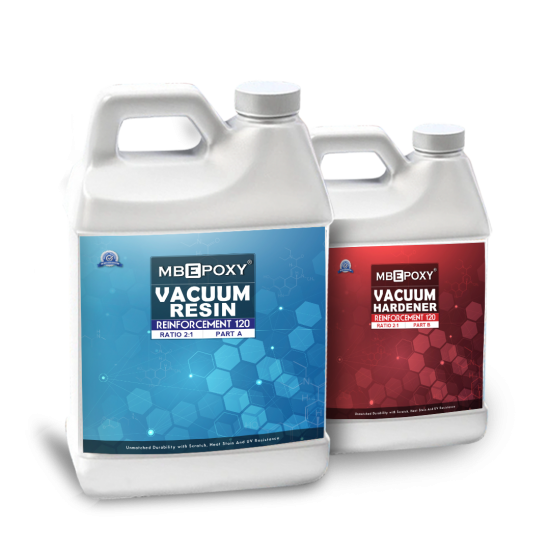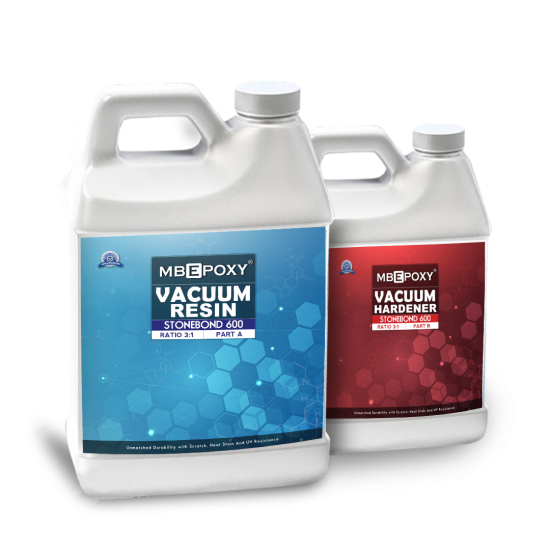Epoxy Vaccum
Epoxy Vacuum
What is Epoxy Vacuum?
Epoxy vacuum, also known as vacuum infusion or vacuum bagging, is a technique used in the application of epoxy resin to ensure optimal results. It involves creating a vacuum environment to remove air and improve the bonding and curing process of epoxy resin. This method is widely used in industries such as aerospace, automotive, marine, and composites manufacturing.
How to Use an Epoxy Vacuum:
- Prepare the workspace and gather the necessary materials, including the epoxy resin, hardener, vacuum chamber, vacuum pump, vacuum bagging materials, and the project to be infused.
- Place the project inside the vacuum chamber, ensuring proper alignment and positioning.
- Connect the vacuum bagging materials, such as the vacuum bag, sealant tape, and breather fabric, to create an airtight seal around the project.
- Start the vacuum pump to create the desired vacuum pressure within the chamber. Monitor and adjust the pressure as required.
- Mix the epoxy resin and hardener according to the manufacturer's instructions. Apply the resin to the project, ensuring thorough saturation and penetration.
- Allow the epoxy resin to cure under the vacuum pressure, which typically takes several hours or as per the resin's specifications.
- Once the curing is complete, release the vacuum pressure and remove the project from the chamber.
- Clean up the workspace, properly dispose of any waste materials, and ensure proper storage of the epoxy resin and vacuum equipment.
Here are the Benefits of Epoxy Vacuum:
- Improved Consistency: Epoxy vacuum eliminates air bubbles and voids within the epoxy resin, resulting in a more consistent and uniform application. This leads to enhanced strength, durability, and overall quality of the finished product.
- Enhanced Adhesion: The vacuum process ensures excellent adhesion between the epoxy resin and the substrate. By removing air, the epoxy can penetrate and bond effectively, resulting in stronger and more reliable bonds.
- Reduced Waste: Epoxy vacuum minimizes resin waste by eliminating excess air and voids. This efficiency helps optimize material usage and reduce costs.
- Superior Surface Finish: The vacuum technique results in a smooth and blemish-free surface finish, as air bubbles and imperfections are eliminated during the curing process. This is especially crucial in applications where aesthetics are important.
Here are some FAQs to solve your problems regarding Epoxy Vaccum:
1. What types of projects can benefit from an epoxy vacuum?
Answer - Epoxy vacuum is beneficial for projects that involve laminating composite materials, manufacturing fiberglass parts, creating carbon fiber components, or any application requiring strong and uniform epoxy resin bonding.
2. Can epoxy vacuum be used with different types of epoxy resin?
Answer - Yes, epoxy vacuum can be used with various epoxy resin formulations, including standard epoxies, high-performance epoxies, and specialty resins. It is important to follow the manufacturer's guidelines for optimal results.
3. How does epoxy vacuum improve the strength of epoxy resin bonds?
Answer - Epoxy vacuum removes air bubbles and voids during the curing process, allowing the epoxy resin to fully penetrate and bond with the substrate. This eliminates weak spots and ensures a more solid and durable bond between the resin and the material, resulting in increased strength and reliability.
4. Can epoxy vacuum be used for repairing damaged or cracked materials?
Answer - Yes, epoxy vacuum can be used for repairing damaged or cracked materials. The vacuum process helps ensure proper adhesion and consolidation of the epoxy resin, reinforcing the repaired area and restoring structural integrity.
-2462x2317.png)


